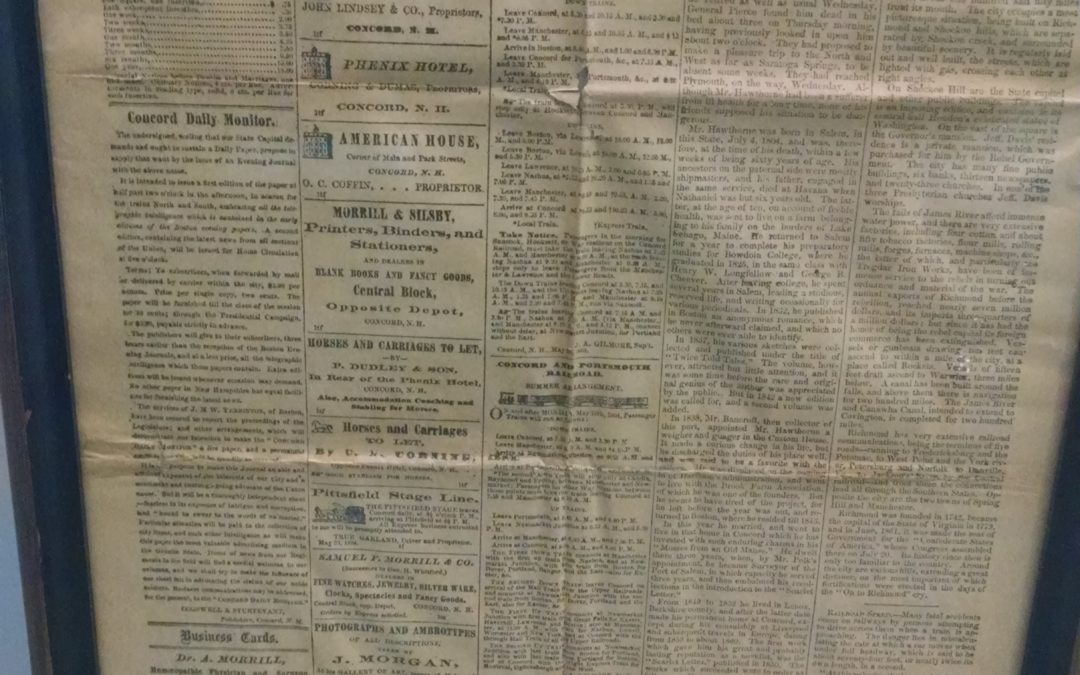An editor here recently pointed to what he jokingly called “the first Granite Geek item” on the framed front page of the very first Concord Daily Monitor, printed May 23, 1864. (The lead headline: “Death of Nathan Hawthorn.”) An article does some number-crunching to discuss how people’s mis-perception of the speed at which locomotives move causes accidents at crossings.
One sentence caught my attention: “When the locomotive whistle is opened at the post, eighty rods from the crossing, the train will advance near one hundred feet before the sound of the whistle traverses the distance to, and is heard at, the crossing.” (The post is the point that lets the engineer know a crossing is approaching, and to sound the whistle.)
This seemed wrong to me – surely sound travels too fast for a Civil War train to go that far while it was covering that much distance? – although I wasn’t sure because I, like you, don’t know how long a “rod” is. A quick check with Uncle Internet finds that a rod is 16.5 feet, so 80 rods is 1,320 feet. Sound travels at about 1,000 feet per second, depending on conditions, and earlier the article talked about trains going 50 mph, which is 74 feet per second. Traveling 74 f/s for 1.3 seconds means – well, I’ll be darned – the locomotive would, indeed, travel “near 100 feet” while the sound of the whistle is en route from post to crossing. The article was fine.
Skepticism is usually thought of as debunking or showing that something is wrong, but it’s perfectly fine to be skeptical of something that turns out to be true, as long as you’re willing to admit that your doubt was misplaced.
My doubt was misplaced. Sorry to have questioned you, Monitor editors from 1864.


 Return to the Concord Monitor
Return to the Concord Monitor